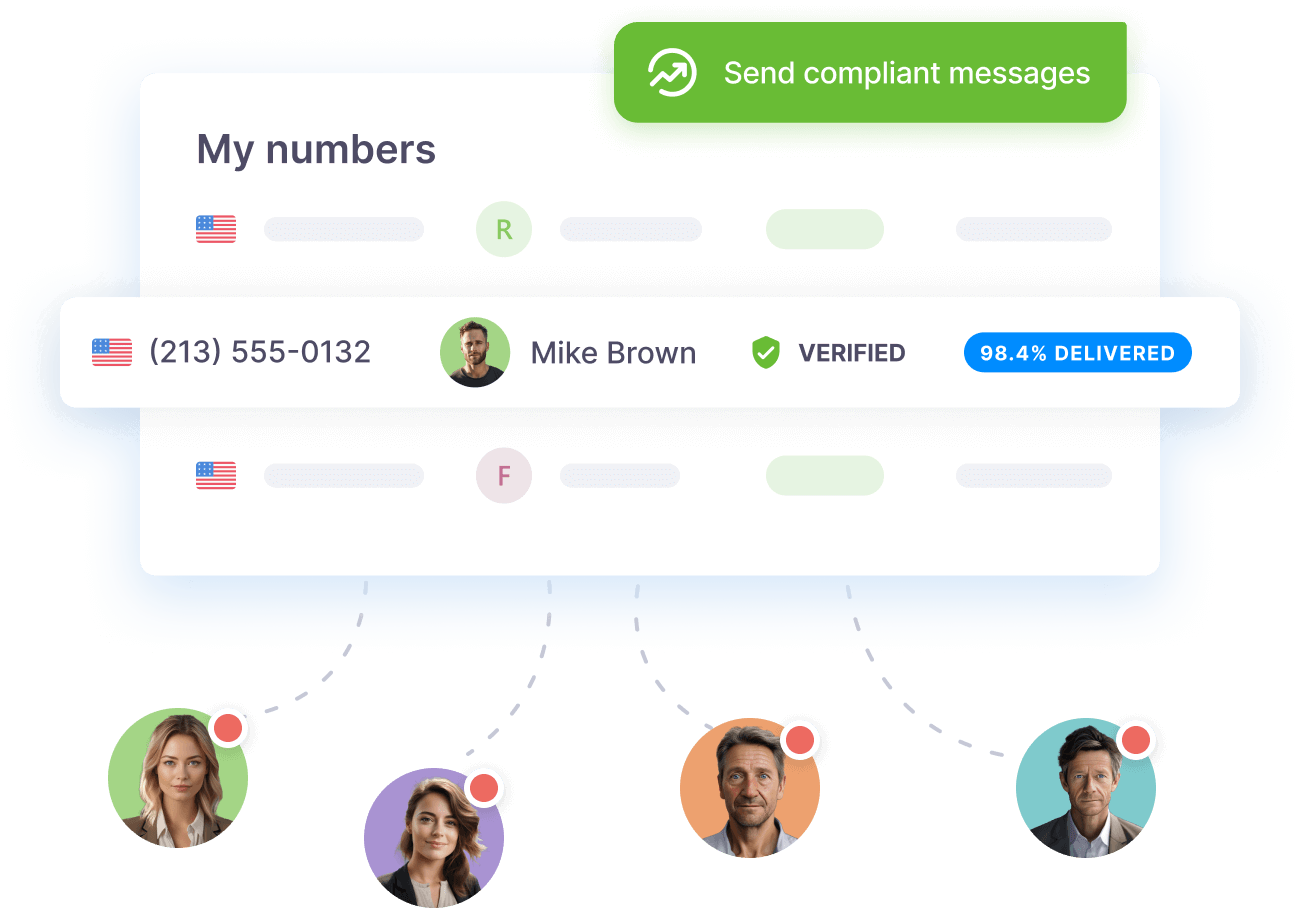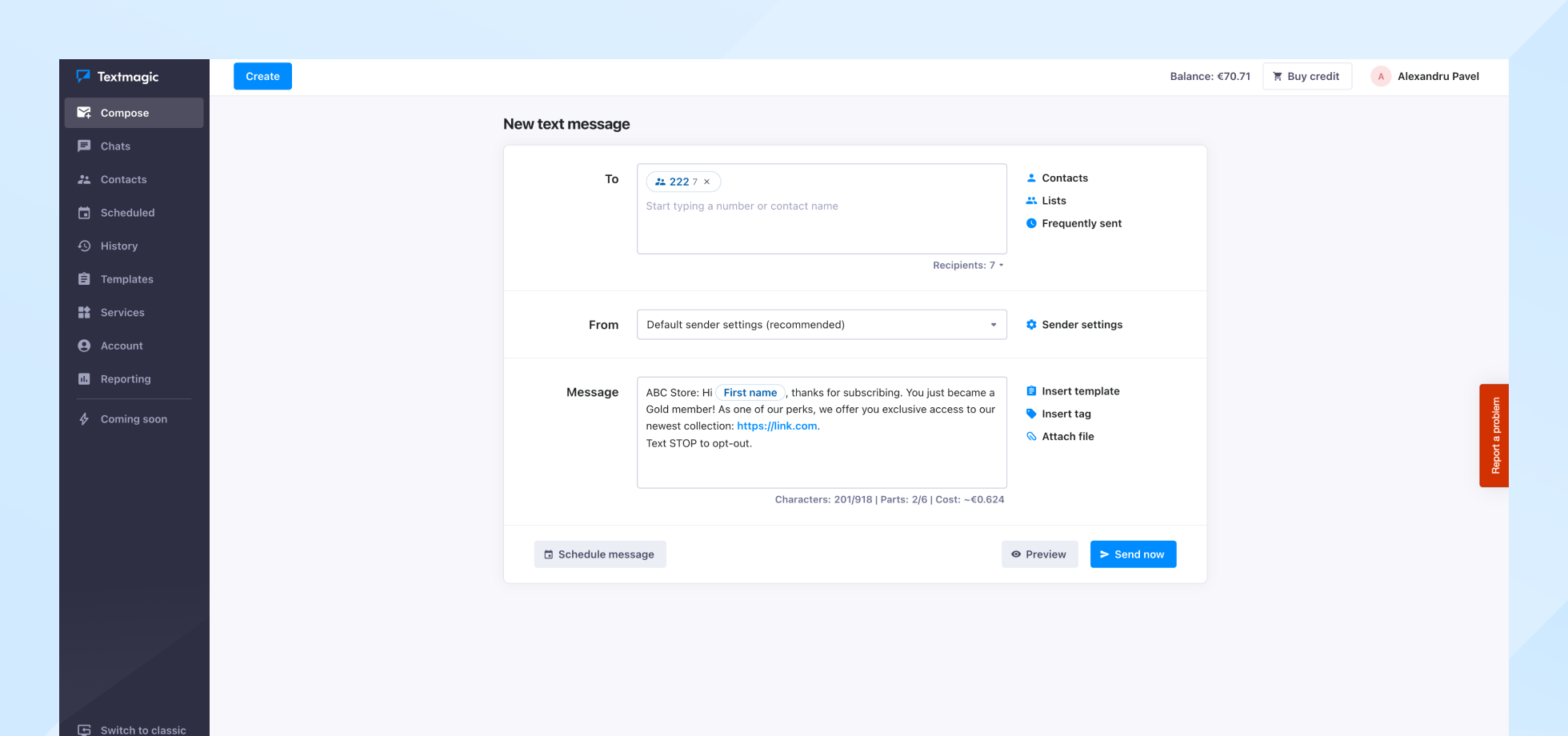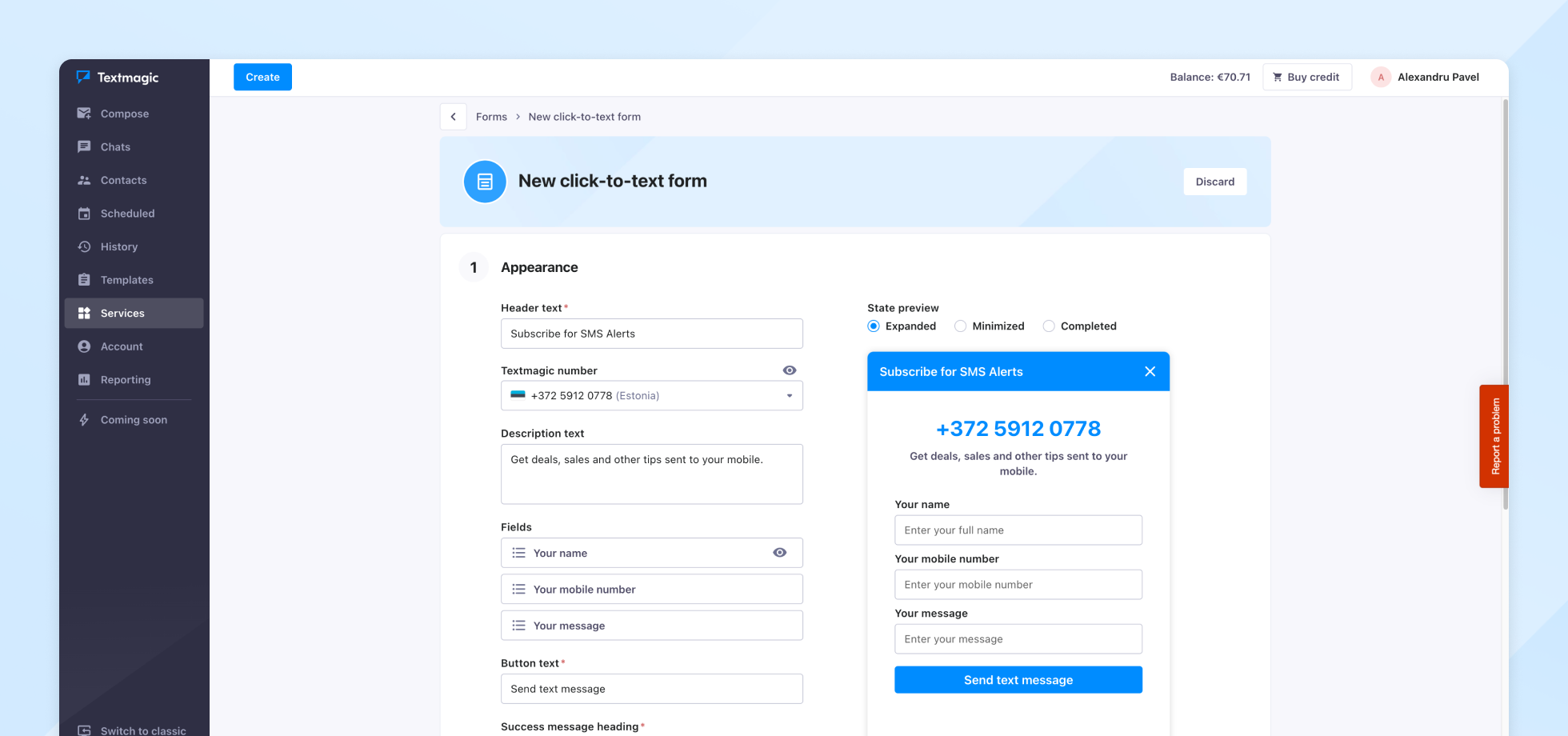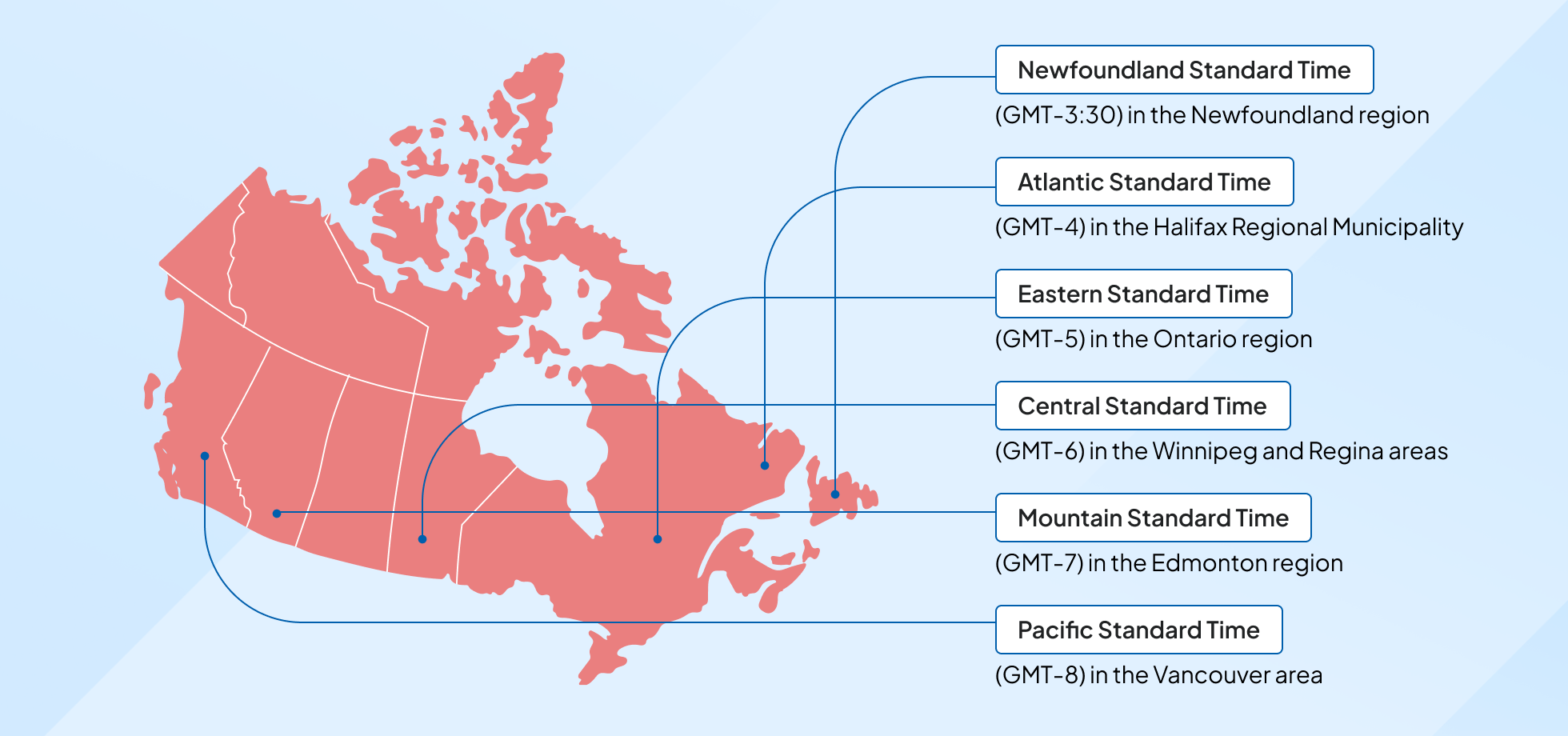
Texting in Canada comes with its own laws you must abide by as a business targeting consumers. In this article, we will delve into the landscape of Canada’s SMS regulations and discuss some guidelines and best practices for SMS marketing in the country.
Understanding Canadian texting regulations
First and foremost, it’s important to mention that SMS marketing is completely legal in Canada. However, the way in which companies approach it is regulated by the Canadian Anti-Spam Legislation (CASL).
An overview of CASL regulations
CASL came into effect in July 2014 to protect consumers against unwanted commercial electronic messages. It’s enforced by the Canadian Radio-television and Telecommunications Commission (CRTC).
A CEM is any electronic message meant to convince users to participate in commercial activities. It can fall under any of the following categories:
- Emails
- Text messages
- VoIP phone calls
- Digital TV and radio
- Social media
Under the CASL, all commercial messages must include sender identification, with contact details that stay valid for 60 days. These messages must also have an easy way to unsubscribe.
Customer consent under CASL
Consent is a focal point of the CASL. There are two types of consent under it: implied consent and express consent.
Implied consent refers to a situation where permission to receive commercial messages is not explicitly given by the recipient but can be reasonably inferred based on certain circumstances.
According to Canada SMS regulations, there are three scenarios in which implied consent may be granted:

It’s also important to note that implied consent expires after two years. If you’re past this time window, re-obtaining consent from users before sending them any form of CEM is mandatory.
Express consent is obtained when the user opts in by performing an intentional action, such as completing a form, checking a box, or texting a permission-granting word.
Businesses must clearly state what they’re asking permission for (e.g., to send the user promotional offers) in the opt-in. Express consent expires anytime it’s revoked, which is a fundamental right of the user.
For this reason, we strongly recommend always getting users’ express consent when texting in Canada. Doing so will reduce the risks of being penalized under the CASL and ensure you reach out to a list of fully engaged people.
Other Canada SMS regulations
Other regulations may impact SMS marketing in Canada, though CASL is the primary legislation governing electronic communication.
- Personal Information Protection and Electronic Documents Act (PIPEDA), which governs personal information collection, use, and disclosure in commercial activities across Canada.
- Canadian Short Code Compliance Policies, which cover obtaining user consent before messaging, providing opt-out mechanisms, prohibiting unlawful or deceptive content, accurately identifying the sender, and disclosing message costs. It only concerns businesses who use short code phone numbers.
- High-risk markets such as tobacco, alcohol, gambling, and adult content are subject to additional verifications. Businesses must be able to provide confirmation that recipients are of legal age before engaging in the campaign.
Penalties for non-compliance
Failing to comply with the CASL can lead you to incur a number of penalties. First and foremost, individuals or companies that breach the legislation risk receiving an administrative monetary penalty (AMP).
The value of the AMP can be up to $1 million for individuals or $10 million for companies, and is established depending on several factors:
- Nature and scope of the compliance breach
- Financial benefits gained by the perpetrator
- The perpetrator’s ability to pay a fine
- The perpetrator’s track record of compliance
- Other case-by-case mitigating or aggravating factors
Besides the AMP, a company may face criminal and civil charges if the CRTC finds it guilty of a compliance violation.
Officers, agents, directors, and mandataries within the organization can also be subject to personal liability if they’ve participated in the compliance breach in any way. This penalty is independent of whether or not the company is charged with violating the CASL.
Toll-free numbers in Canada
Canadian toll-free numbers are typically used by businesses to offer customers a free way to contact them. Like US toll-free numbers, they are part of the North American Numbering Plan (NANP). For this reason, they have the same prefixes: 800, 833, 844, 855, 866, 877, and 888.
Local Canadian numbers allow you to send a limited number of messages every day. For this reason, businesses seeking to send bulk SMS in Canada often choose toll-free numbers.
If you’re a Canadian business in need of a toll-free number, signing up for Textmagic will grant you access to one, available free of charge for one month. This is an excellent opportunity for businesses looking to expand their SMS outreach without incurring immediate costs. For more details on this offer and instructions on how to get started, please refer to the step-by-step guide below.
Get a toll-free number for texting in Canada
Deliver compliant, reliable messages that strengthen customer trust and keep your business connected.

How to choose a Canadian texting service
The first thing to do when choosing a Canadian texting service for your business is to ensure it complies with Canada SMS regulations. Here a few other important aspects to consider:
- User-friendly dashboard
- Simple verification flow for Canada numbers
- Automation capabilities
- Segmentation & customization
- Seamless integrations and API
- Product demos or trials
- Positive reviews and testimonials
SMS costs in Canada
The cost of SMS in Canada varies depending on the type of messaging plan and service provider you choose. Prices typically range from $0.032 to $0.25 per SMS.
MMS, which include multimedia content, are generally more expensive to send than SMS, and in some instances, they can even be double or triple the cost.
Renting a number for your SMS campaign will also incur a monthly fee between $10 and $25, on average.
Apart from basic SMS prices, your subscription with your provider can come with additional fees. These include setup fees, charges for additional features, and potential overage fees.
Overage fees occur when you exceed your plan’s message limit and could range from $0.05 to $0.20 per additional message.
Starting your Canada SMS marketing campaign with Textmagic
Textmagic offers a variety of features and services that businesses can utilize to enhance their communication strategies. Here’s a quick guide on starting your Canada SMS marketing campaign on our platform:

- Create an account and get your toll-free number
Sign up for a Textmagic account and verify your email address. Upon account verification, you will immediately receive a toll-free number, free to use for one month.
- Choose your preferred number
For bulk SMS sending, use the provided toll-free number. You also have the option to purchase an additional toll-free number for broader outreach. This can be particularly useful when you want to expand your reach to a larger audience or cover more geographical areas.
- Verify your toll-free number
Before launching SMS campaigns, you need to verify your new toll-free number. For a comprehensive understanding of this free process, make sure you consult our toll-free number verification guide.
- Import contact lists
Import any existing contact lists onto the Textmagic platform. Use Textmagic’s features to maintain compliance, including opt-in and opt-out mechanisms for audience management.
Textmagic allows you to create online forms for opting in, as well as set automation rules for granting or revoking consent through SMS keywords.
- Launch your SMS campaign
Start messaging and expanding your audience with Textmagic, ensuring all communications align with Canada’s SMS regulations for compliant and effective engagement.

On top of SMS campaigns, the Textmagic app can also be leveraged for:
- appointment reminders
- order and delivery updates
- feedback collection
- customer support
- emergency alerts
- internal communications
Best practices for texting in Canada
How you obtain consent, manage your contact lists, and time your campaigns is vital for SMS marketing in Canada. Below are a few best practices to achieve success and compliance in this territory:
- Send content that is relevant to your audience. Personalize messages based on demographics, purchase history or engagement patterns for higher response rates.
- Nurture and update lists. Periodically reconfirm users’ interests in receiving messages to stay compliant.
- Time your campaigns. Canada has six different time zones, so make sure you schedule campaigns to hit everyone within regular waking hours. Don’t text your audience too early or too late in the day.

Conclusion
SMS marketing in Canada comes with its own challenges, and regulatory compliance is perhaps the most important. However, creating campaigns that respect the laws put into place by the CASL and other relevant frameworks is a must when you want to endure
The line between giving and revoking consent is a fine one for many customers, but you can walk it successfully by respecting their right to privacy and valuing their time. This way, your Canadian business and customers will surely thrive side by side.
Start SMS marketing campaigns in Canada
Engage customers instantly with compliant, reliable messages that drive real results.

Frequently Asked Questions (FAQs)
Yes, SMS marketing is legal in Canada, but businesses must comply with Canada’s Anti-Spam Legislation (CASL). This includes obtaining consent before sending messages and providing a clear way for recipients to unsubscribe.
CASL recognizes two types of consent: express and implied. Express consent is given explicitly by the user, such as checking a box on a form. Implied consent may arise from existing business relationships, but it’s more limited in scope and duration.
Each message must clearly identify the sender, include valid contact information, and offer an easy opt-out method (typically by replying with “STOP” or a similar keyword). Messages must also avoid being misleading or deceptive.
Yes. CASL violations can result in substantial fines: up to $10 million for businesses per violation. The law is strictly enforced, so compliance is essential for any business using SMS marketing in Canada.
Permitted messages include promotional texts, alerts, reminders, and transactional notifications, as long as proper consent has been obtained and the content follows CASL guidelines.
Absolutely. As long as they follow the legal requirements for consent and message formatting, SMS can be an effective and affordable way for small businesses to connect with customers and grow their reach.
Related articles
Textedly vs. Textmagic: Which one should you choose?
Looking for a messaging platform to suit your busine...
Top 15 best customer service companies: Setting the gold standard
Companies face a $3.7 trillion annual risk due to ba...
Effective lead nurturing strategies with SMS marketing
Our phones have become an integral part of our daily...
21 Inspiring quotes about the future of mobile
Mobile isn’t just another channel; but an enti...
40 Christmas text message templates and tips for businesses
The holiday season is the perfect time to connect wi...




